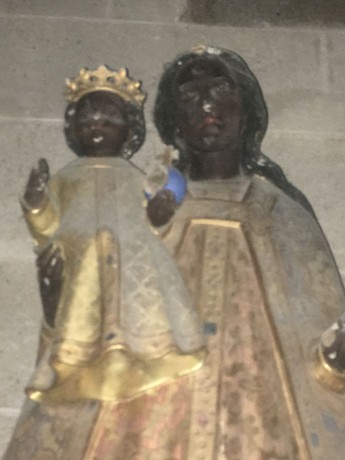Shadow Puppetry | A Chinese folk art
Shadow puppetry, also known as shadow play, is a Chinese folk art and the earliest animated technique in the world.
https://www.youtube.com/watch?v=6C6m3aKjzLk
***
The Wayang Puppet Theatre
Renowned for its elaborate puppets and complex musical styles, this ancient form of storytelling originated on the Indonesian island of Java. For ten centuries wayang flourished at the royal courts of Java and Bali as well as in rural areas. Wayang has spread to other islands (Lombok, Madura, Sumatra and Borneo) where various local performance styles and musical accompaniments have developed. While these carefully handcrafted puppets vary in size, shape and style, two principal types prevail: the three-dimensional wooden puppet (wayang klitik or golèk) and the flat leather shadow puppet (wayang kulit) projected in front of a screen lit from behind. Both types are characterized by costumes, facial features and articulated body parts. The master puppeteer (dalang) manipulates the swivelling arms by means of slender sticks attached to the puppets. Singers and musicians play complex melodies on bronze instruments and gamelan drums. In the past, puppeteers were regarded as cultivated literary experts who transmitted moral and aesthetic values through their art. The words and actions of comic characters representing the ordinary person have provided a vehicle for criticizing sensitive social and political issues, and it is believed that this special role may have contributed to wayangs survival over the centuries. Wayang stories borrow characters from indigenous myths, Indian epics and heroes from Persian tales. The repertory and performance techniques were transmitted orally within the families of puppeteers, musicians and puppet-makers. Master puppeteers are expected to memorize a vast repertory of stories and to recite ancient narrative passages and poetic songs in a witty and creative manner. The Wayang Puppet Theatre still enjoys great popularity. However, to compete successfully with modern forms of pastimes such as video, television or karaoke, performers tend to accentuate comic scenes at the expense of the story line and to replace musical accompaniment with pop tunes, leading to the loss of some characteristic features.
UNESCO: Representative List of the Intangible Cultural Heritage of Humanity - 2008
https://www.youtube.com/watch?v=pfydro4X2t0

